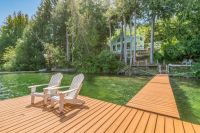- Subscribe
-
Newsletter
-
New Listings
Beautifully-Updated Condo in the Heart of Parksville - 266 Hirst Ave
Location: British Columbia
Price: 449,900.00 CADPrivate Qualicum Beach Semi-Waterfront - 3008 Island Hwy
Location: British Columbia
Price: 1,075,000.00 CADFabulous Waterfront Home on Horne Lake - South Lake Rd
Location: British Columbia
Price: 1,098,000.00 CADPark-Like French Creek Acreage - Drew Rd
Location: British Columbia
Price: 1,198,000.00 CADLovely Chelsea Court 55+ Patio Home - Pym St
Location: British Columbia
Price: 610,000.00 CADBeautiful Beachcomber Oceanview Home - Marina Way
Location: British Columbia
Price: 879,000.00 CAD





